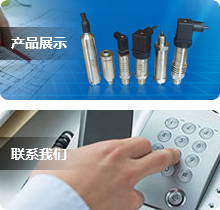核电厂中蒸发装置、冷却装置是硼回收系统、废液收集处理系统等重要组成部分,蒸汽冷凝水平衡槽用于收集蒸汽冷凝水,并通过其液位控制来保持冷却器内充满被冷却的液体,蒸汽冷凝槽液位控制对核电站辅助工艺系统的正常稳定运行起着重要作用。由于核电站硼回收系统、废液收集处理系统产生的气体、液体均带有放射性,蒸汽冷凝槽放置于人员禁止靠近或不易靠近的区域,这就对仪表的安装位置提出了要求,测量仪表应安装于便于维护、放射性较低的区域。而差压液位变送器由于其性能稳定、精度高、分离式安装等特点,其广泛应用于核电站液位测量中。本文以某核电厂的蒸汽冷凝水平衡槽液位测量为例,详细阐述了差压液位变送器在蒸汽冷凝水平衡槽中的设计应用,并结合某核电厂实际安装调试问题对其进行了分析及改进。
差压液位变送器测量原理
差压传感器测量原理为:来自双侧导压罐中的压力作用于传感器两侧的隔离膜片上,通过膜片内的密封液传导至测量元件上,测量元件将测得的压差值转换成对应的电信号(4 ~20mA 信号)输出。差压液位变送器工作原理:通过特定的系统布置,依据液体压强计算公式(P = ),将被测容器的液位测量转化成压差测量,再通过相应的公式推算可计算出被测容器实时液位值。差压液位变送器应用场合主要有常压容器液位测量、带压容器液位测量两种。 蒸汽冷凝水平衡槽液位测量系统
蒸汽冷凝水平衡槽液位测量系统采用差压式液位测量原理,液位测量系统主要有储槽 、平衡容器、平衡容器补水管线及连通管、仪表根阀、差压变送器及引压管路组成。该液位测量装置专门设置平衡容器,以避免差压变送器气体测量端由于蒸汽冷凝带来的误差以及高温蒸汽对测量仪表造成的损害。
其工作流程及原理如下: 平衡罐安装于被测容器的上方,平衡罐中部通过管线与冷凝槽上部进气/液管线连通。系统调试运行前,首先通过平衡罐顶部补水管线对平衡容器进行补水,当平衡罐中液体超过连通管接口时,多余的液体自流进废液储槽,停止补水,保持平衡罐上部气压与废液储槽上部气压一致。差压变送器一端连接废液储槽底部压力接口,一端连接平衡罐底部压力接口,根据差压式液位测量原理,差压变送器实际测量的差压值经过公式换算后,可得到废液储槽的实时液位。
差压液位变送器安装与调试方法
差压液位变送器的正确规范安装以及安装方式对应量程、上限、下限的计算和设置决定了容器液位测量的正确性。差压液位变送器在蒸汽冷凝水平衡槽液位测量中应用时,应注意以下事项:
1、传感器(差压变送器)的安装高度应低于 0%容器液位;
2、平衡罐的安装高度应高于容器上部取源口,容器与平衡罐的连同管线应保持至少 2% 的坡度,保证平衡罐中补充或冷凝的多余液体回流到容器中,以维持传感器平衡罐测得压力恒定;
3、容器上部取源口应高于 100%容器液位;
4、从仪表根阀至传感器的引压管线应保持往下至少 2%的坡度,使引压罐中不会集气;
5、传感器应安装于辐射剂量较低的区域(黄区、绿区或白区),以便于现场维护。
目前,差压液位变送器在核电站蒸汽冷凝水平衡槽的液位测量中已得到广泛的应用,液位测量方式运行稳定、测量精度高、便于维护且经济性高。但在安装调试过程中,仍然出现各种各样的问题,这就要求核电站设计、安装、调试人员应对液位测量变送器的测量原理、安装要求、迁移计算方法等有比较清楚的认知,这样才能保证冷凝水平衡槽液位的正确、精确测量。
Evaporator and cooler are important parts of boron recovery system and waste liquid collection and treatment system in nuclear power plant. Steam condensation water balance trough is used to collect steam condensate and keep the cooler filled with cooled liquid through its liquid level control. Steam condensation trough level control is positive for auxiliary process system of nuclear power plant. Constant stable operation plays an important role. Because the gas and liquid produced by the boron recovery system and waste liquid collection and treatment system of nuclear power plant are radioactive, the steam condensation tank is placed in the area which is prohibited from being near or not easy to be near by the personnel. This requires the installation position of the instrument. The measuring instrument should be installed in the area which is easy to maintain and has low radioactivity. Differential pressure liquid level transmitter is widely used in nuclear power plant level measurement because of its stable performance, high precision and separation installation. Taking the level measurement of steam condensation water balance tank in a nuclear power plant as an example, this paper expounds the design and application of differential pressure level transmitter in steam condensation water balance tank in detail, and analyzes and improves it according to the actual installation and commissioning problems of a nuclear power plant.
Measuring principle of differential pressure level transmitter
The measuring principle of the differential pressure sensor is that the pressure from the two-side pressure tank acts on the isolation diaphragm on both sides of the sensor, and the sealing fluid in the diaphragm is transmitted to the measuring element, which converts the measured pressure difference into the corresponding electrical signal (4-20mA signal) to output. The working principle of differential pressure liquid level transmitter: According to the formula of liquid pressure calculation (P=), the liquid level measurement of the vessel under test is transformed into the pressure difference measurement through the specific system arrangement, and then the real-time liquid level value of the vessel under test can be calculated by the corresponding formula calculation. Differential pressure liquid level transmitter is mainly used in atmospheric pressure vessel level measurement and pressure vessel level measurement. Steam condensate balance tank level measuring system
The liquid level measurement system of steam condensation water balance tank adopts the principle of differential pressure liquid level measurement. The liquid level measurement system mainly consists of storage tank, balance vessel, balance vessel filling water pipeline and connecting pipe, instrument root valve, differential pressure transmitter and lead pressure pipeline. The liquid level measuring device is specially equipped with a balancing vessel to avoid errors caused by steam condensation at the gas measuring end of the differential pressure transmitter and damage to the measuring instrument caused by high temperature steam.
The working process and principle are as follows: the balance tank is installed above the vessel under test, and the middle part of the balance tank is connected with the upper air/liquid inlet pipeline of the condensation tank through a pipeline. Before debugging and running, the balance tank is supplied with water through the top water supply pipeline of the balance tank. When the liquid in the balance tank exceeds the connecting pipe interface, the excess liquid flows into the waste liquid storage tank by itself, and the water supply is stopped, so that the upper pressure of the balance tank is consistent with the upper pressure of the waste liquid storage tank. One end of the differential pressure transmitter is connected with the bottom pressure interface of the waste liquid storage tank, and the other end is connected with the bottom pressure interface of the balance tank.
Installation and debugging method of differential pressure level transmitter
The correct and standard installation of differential pressure liquid level transmitter and the calculation and setting of corresponding range, upper limit and lower limit of installation mode determine the accuracy of liquid level measurement of container. The application of differential pressure transmitter to the level measurement of steam condensate water balance tank should pay attention to the following matters:
1, the installation height of the sensor (differential pressure transmitter) should be lower than that of the 0% container.
2. The installation height of the balancing tank should be higher than the source inlet of the upper part of the vessel. The same pipeline of the vessel and the balancing tank should maintain at least 2% slope to ensure that the excess liquid added or condensed in the balancing tank can be refluxed into the vessel to maintain the constant pressure measured by the sensor balancing tank.
3, the upper part of the container should be higher than the 100% container level.
4. The pressure pipeline from the instrument root valve to the sensor should be kept at least 2% downward so that the pressure tank will not collect air.
5. Sensors should be installed in areas with low radiation dose (yellow, green or white) for on-site maintenance.
At present, differential pressure liquid level transmitter has been widely used in the level measurement of steam condensation water balance tank in nuclear power plant. The method of liquid level measurement is stable, accurate, easy to maintain and economical. However, in the process of installation and commissioning, there are still various problems, which require the design, installation and commissioning personnel of nuclear power plant to have a clear understanding of the measurement principle, installation requirements, migration calculation method of the level transducer, so as to ensure the correct and accurate measurement of the level of condensation water balance tank.




